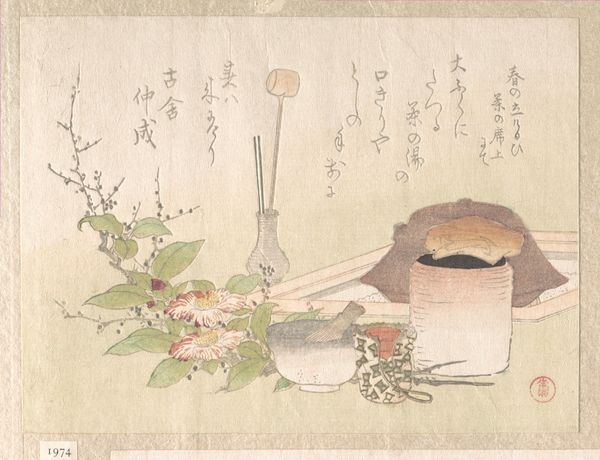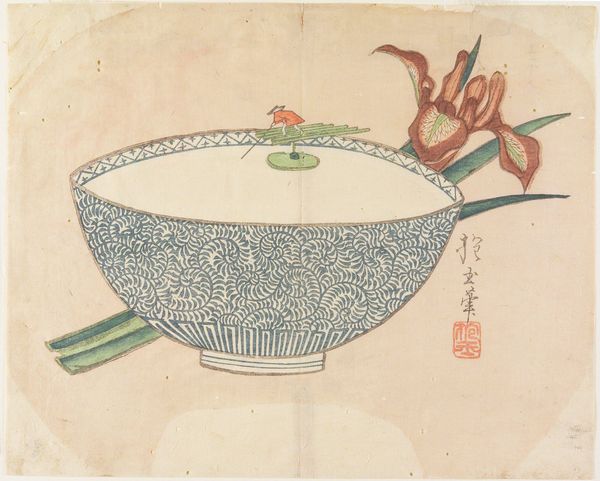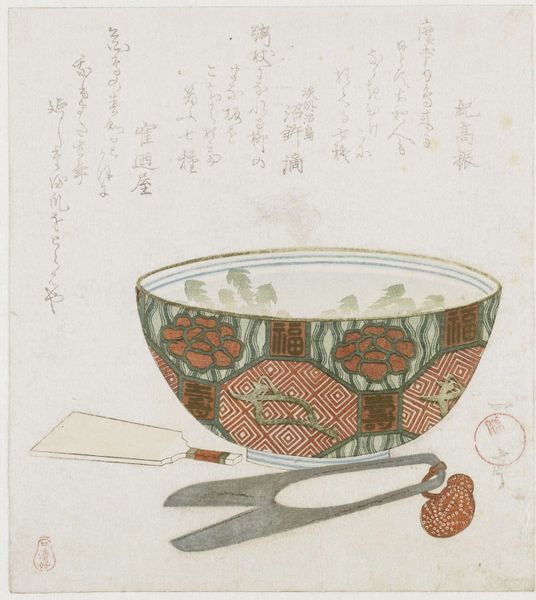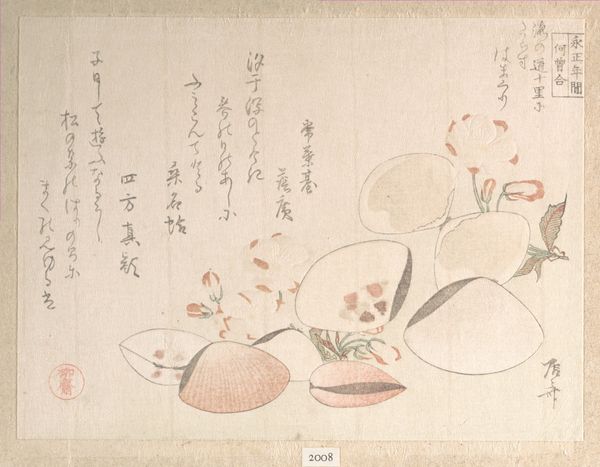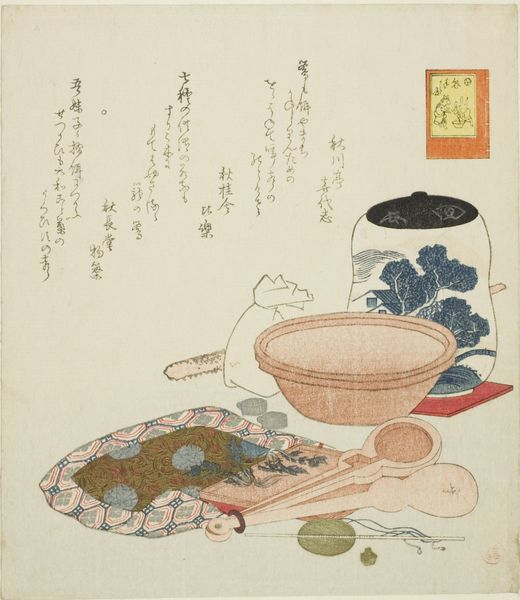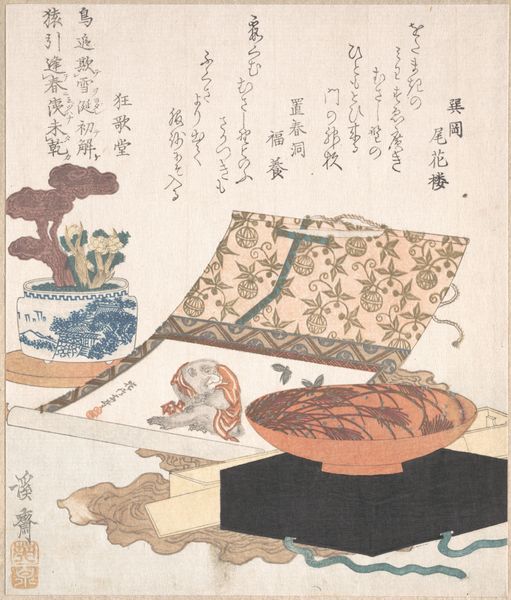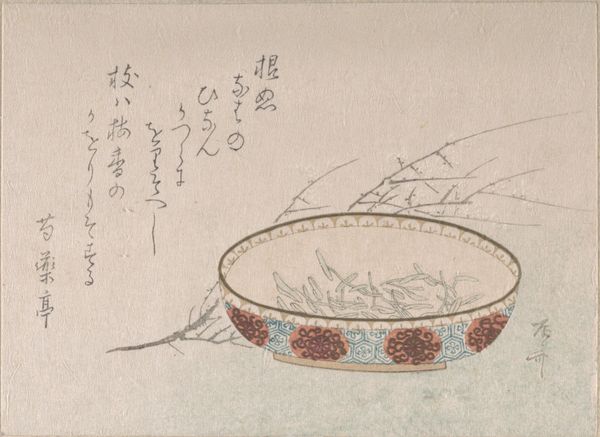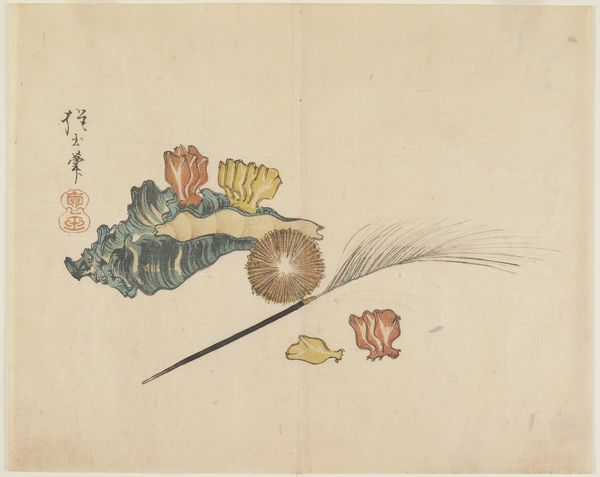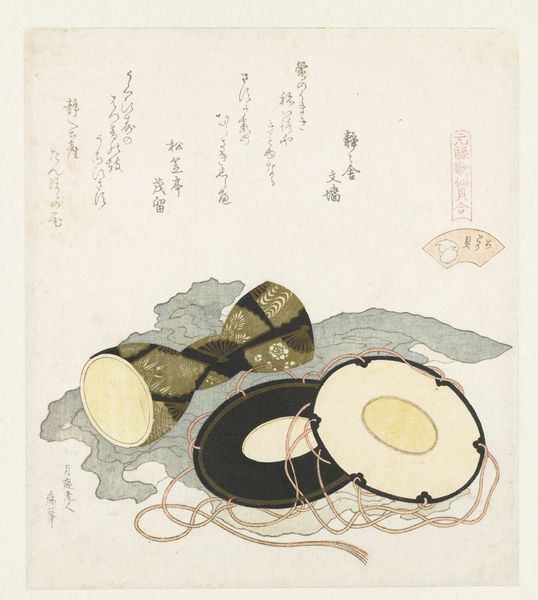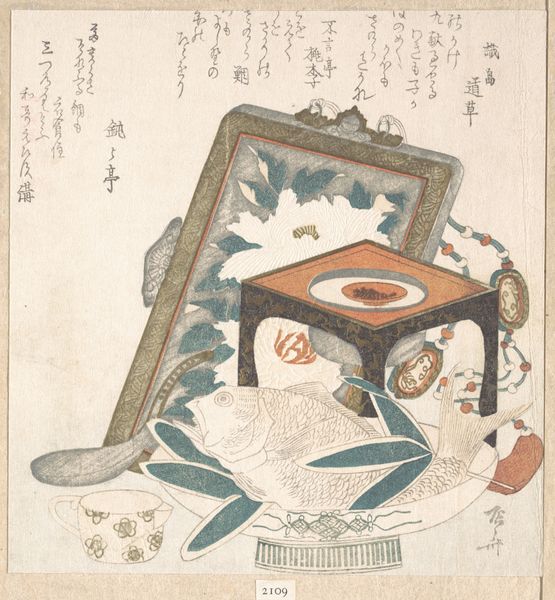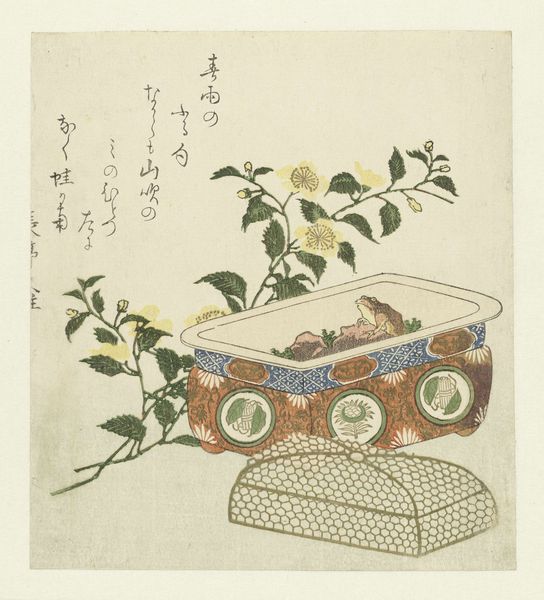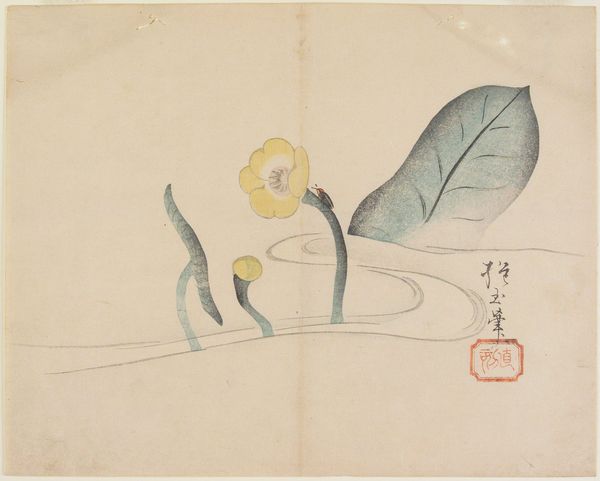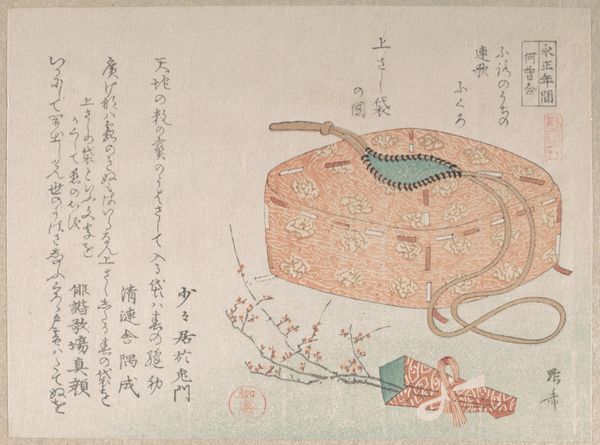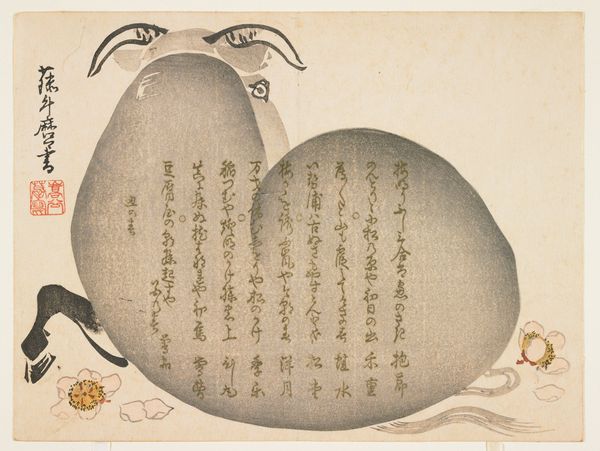
painting, print, watercolor, ink
#
water colours
#
painting
# print
#
asian-art
#
ukiyo-e
#
japan
#
personal sketchbook
#
watercolor
#
ink
#
coloured pencil
#
orientalism
#
watercolour illustration
Dimensions: 9 3/16 × 11 9/16 in. (23.3 × 29.4 cm) (image, sheet, uchiwa-e)
Copyright: Public Domain
Editor: This watercolor print, "Fish in Bowl of Water" by Yamada Hōgyoku, from around the 1830s, is interesting. It features a fish in a bowl surrounded by what looks like gourds. What stands out to me is the materiality of the piece, the delicate quality of the watercolor, and the seemingly everyday subject matter. What do you see in this work? Curator: The "everyday" is precisely what I find fascinating here. Let's consider the context: mass-produced prints circulated widely in 19th-century Japan. This wasn't high art for the elite; it was for consumption by a broader public. Notice the interplay between the organic forms—the fish, the gourds—and the meticulously rendered bowl. The bowl itself becomes a manufactured object displayed alongside elements taken directly from nature. Editor: So, it's not just a pretty picture, it's about the interaction between nature and manufactured goods. But how does that relate to a materialist perspective? Curator: It all comes down to how things are made and circulated. Printmaking, watercolor production, the firing of the bowl - each of these is a material process dependent on labor. Think about the social implications: Who had access to these images? What did owning a print like this signify in terms of status or taste? Were the materials locally sourced? Editor: That makes sense. The value isn’t necessarily in the artistic skill but in how the production and distribution reflects the society and its economy. Did these kinds of prints have an influence beyond just Japanese society at the time? Curator: Absolutely. Ukiyo-e prints heavily influenced Western artists with their accessible processes of creating images and commercial availability to mass audiences in places like France, with readily reproducible content appealing to a wide variety of buyers. So what begins here impacts an entirely new generation of artists who were enthralled by readily consumable artwork from around the world. Editor: That's a completely different way to look at it. I never thought about how the materials themselves and the means of production could be so telling. Thanks! Curator: Indeed. Art is more than just an image; it’s the product of specific processes within larger social and economic systems. I learned how this fishbowl points to production that creates value that shapes a global landscape of cultural change.
Comments
No comments
Be the first to comment and join the conversation on the ultimate creative platform.
